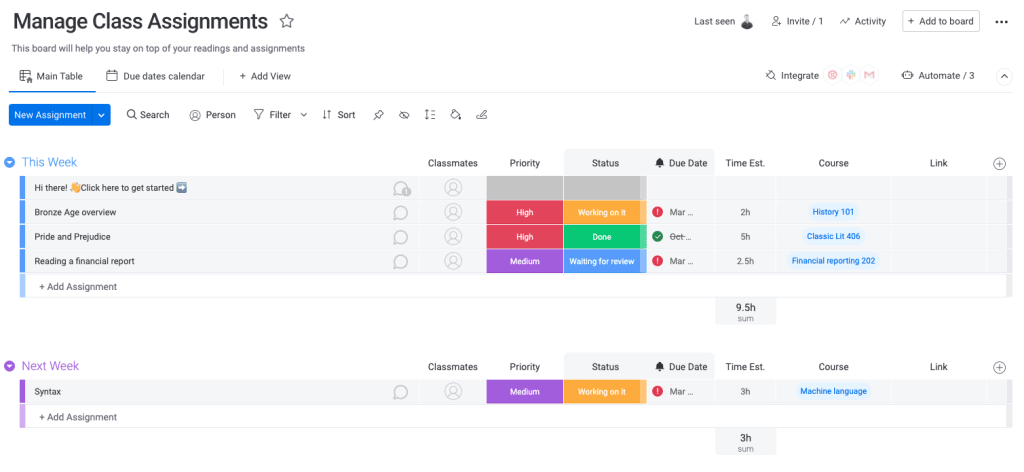We all know that timing is important. From deciding when to end a relationship to cramming a 12-page paper in one night, our lives are flooded with these “when” decisions.
Many people struggle with time management skills. From high school to college and then beyond in life, no one really teaches you any time management strategies to use your time wisely.
We often spend a very little amount of time planning our days based on efficiency.
The trouble is that few people understand timing as a science. Daniel Pink dives into this science in his book “When: The Scientific Secrets of Perfect Timing”. A science that brings together aspects from psychology, endocrinology, anthropology, chronobiology, and many more to answer the constant “when-to” dilemma and offer endless productivity tips.
Our cognitive abilities change throughout the day
In 1983, Nobel Prize winner Daniel Kahneman introduced the Linda problem to demonstrate what’s called the “conjunction fallacy”, one of many ways to show a person’s conductive reasoning.
When researchers posed this question at different times of the day (morning, afternoon, evening), they found that people were significantly more likely to get it right earlier in the day.
Many more studies have been conducted that show a similar pattern. From executive earnings calls having a more positive tone to anesthesiologists making fewer mistakes, the performance on these tasks are strongest at the beginning of the day, and worsen as the day goes on.
These types of tasks have one thing in common: they are analytical. They don’t require any special creativity, but rather a sharp-minded analytic perspective.
Obviously, not all tasks are focus-driven and analytical. Some require creativity, brainstorming, interpersonal communication, etc. And our brains are wired to perform these different types of tasks better at different times of the day.
What does this mean?
Essentially, our brains go through three main phases throughout the course of a day. Since 80% of people are deemed to be morning people (excluding the 20% who are night owls, with their phases being pushed back a few hours), our day consists of the peak (mornings), trough (afternoon), and recovery (evening/night).
During the peak, our brains work best on analytical tasks. Here, it’s best to spend time on the head-down, grind out data analysis, calculus, or programming type of work.
This is a good phase to set aside quality study time, and minimize spending time mindlessly scrolling through social media.
Once you get to the trough, these cognitive abilities diminish significantly. This is the time to schedule meetings or do any of your work that doesn’t require a substantial amount of focus and analytical reasoning. This might also be a good time for a quick nap (the optimal duration being 10-20 minutes) if your schedule allows it.
During the recovery stage, this boost in energy alongside less analytical skills brings about the perfect time for brainstorming and creative thinking.
Scheduling your day
What can we do if we don’t have control over our daily schedule? How can we still optimize this information to be as productive and efficient as possible?
- Be aware – Understanding that you may be operating at a suboptimal time can help in small yet effective ways.
- Work the margins – You may not be able to schedule your day exactly how you want, but take advantage of any extra time that you have. Maybe you have 40 extra minutes in the morning; use that time to grind out some important work rather than mindlessly checking emails.
- Communicate – Be open with your boss or professor about when you work best. Different people work best at slightly different times of the day; but if you’re a manager or freelancer, understanding when you and your team work best and then planning your schedule around that can significantly boost your productivity and efficiency.
Daniel Pink says that “time of day explains the 20 percent variance between who is performing well and who is not. Understanding this hidden pattern can allow you — or allow your boss to allow you — to do the right work at the right time, which will allow you to boost your creativity and boost your productivity.”
As a manager, project lead, or full time college student, scheduling your projects, meetings, and all other workflow tasks to optimize this timing can be difficult, if not impossible. Luckily, monday.com provides businesses with the tools necessary to do this.
From automations, to templates for nearly every problem, to project planning, to fast and easy communication, monday.com can do it all.
Better yet, this platform is free for all college students. monday.com allows all students to plan their days, courses, networking, internship searches, and much more.
Whether you’re a student or a high-end project manager, monday.com allows for an easy-to-use, high-functioning operating system to maximize productivity and efficiency in your everyday life.
For example, you can use monday.com to tag your most mentally demanding tasks and place them in your peak. In turn, you can also place your less analytical tasks further down the daily to-do list, either at your trough or recovery.
The academic planners that monday.com provide allow college students to use their time wisely and get the most out of their college life.

Conclusion
In order to make the jump from good to great, correct and reduce careless mistakes in work, or lead an excelling business, we need to start giving “when” the same power and importance as “what” and “how”.
Especially for students, college time management can often be thrown on the back burner. Productivity for college students is essential to success; and in order to achieve this success, you need to know how to optimize your college planner.
Armed with the knowledge of this science, we can be free to maximize our long term efficiency at work, at school, and in life, allowing us to live up to our fullest potential.

